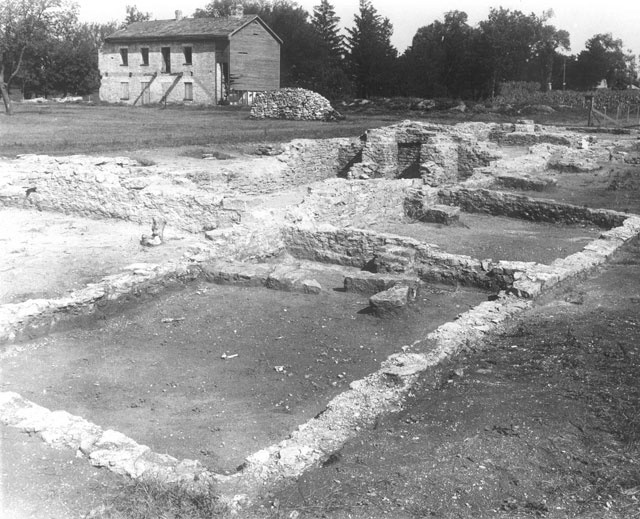

A former fort built to serve as a buffer between warring Native American tribes in northeast Iowa and southeast Minnesota has been listed on the National Register of Historic Places, the result of a petition by the Office of the State Archaeologist at the University of Iowa.
The U.S. government built Fort Atkinson in 1840 to house U.S soldiers, so they could police the Ho-Chunk (Winnebago) tribe and prevent neighboring tribes, including the Sioux, Sauk, and Meskwaki, from entering so-called "neutral ground" established by the government.
The Ho-Chunk were moved to northeast Iowa and southeast Minnesota from their home in Wisconsin, part of a series of relocations of Native American tribes as white settlers flooded into the Midwest in the mid-1800s. The Ho-Chunk lived near the fort until they were relocated to Minnesota in 1848. The soldiers left shortly after, and the fort was sold to private owners by public auction.
It remained empty until 1920, when the state of Iowa acquired the main portion of the fort—three buildings that remain standing—after lobbying efforts were made to preserve it.
John Doershuk, state archeologist, says Fort Atkinson’s inclusion on the national register ensures that it will remain for posterity.
“For Fort Atkinson to receive this designation is a high honor for the state and, of course, the local community, too,” says Doershuk.
Today, Fort Atkinson, located about 125 miles north of Iowa City, stands as a symbol of frontier and military life in the mid-1800s. It is the only remaining fort in Iowa with buildings in their original positions. Three buildings make up the fort: the southwest cannon house, a powder magazine, and one-third of the north barracks.
Originally, the fort included 24 buildings within the stockade and 14 buildings outside the walls. Fort Atkinson now functions as a park and is spread over seven acres. It is also the location of Rendezvous Days, an annual event that takes place during the last full weekend of September.
More than 1,000 school children in Iowa participate in Rendezvous Days and learn about Iowa and its frontier history. Participants dress in authentic frontier and Native American dress and recreate the time period of hunters, trappers, and traders.
“Rendezvous Days is a remarkable event. It really informs school kids about Iowa and its frontier history in an exciting way,” says Cindy Peterson, project archaeologist at the OSA.